Located on the southern tip of New Zealand’s South Island, Fiordland National Park is home to some truly exceptional natural beauties and named after the numerous glacier-carved fiords that make up the park’s coastline, including the world-famous Milford Sound. The largest national park in New Zealand is actually mostly untouched, as there is only one main road in the park. Despite its remoteness, this national park is popular with travelers who come to visit the world famous Milford Sound. Many people who come to the park do only a day trip to Milford Sound and then return back to Te Anau or Queenstown. While Milford Sound is absolutely a must-do experience while here, there are also so many other great stops and hikes along the way. In this post, I’ll share about my experience here and some other great things to do over a few days in the park.
Table of Contents
Day 1: Start in Te Anau

Te Anau is a small town on the shores of Lake Te Anau, about 2 hours from Queenstown. This is the gateway town into Fiordland National Park. You could easily spend a day or half day here. Many people also choose to stay in Te Anau on the nights before and/or after their trips into Fiordland National Park.
Things to Do in Te Anau
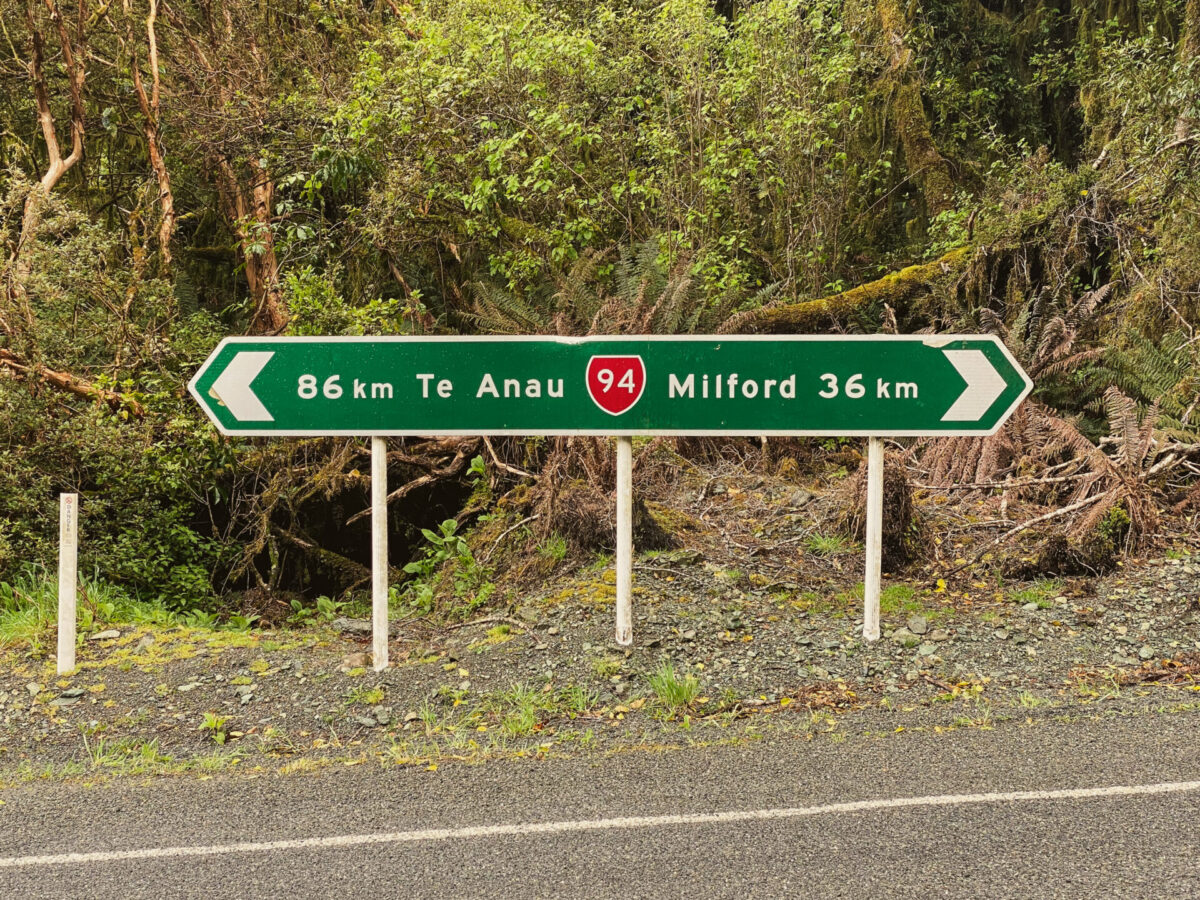
1. Fiordland National Park Visitor Centre
The visitor centre is an important first stop on a trip to the park. Here they have all the latest weather and safety information you’ll need. They also have maps, backcountry/outdoor gear (including some dehydrated food and weatherproof clothing), as well as an informational exhibit about the area.
2. Te Anau Glow Worm Caves
I highly recommend these awesome glow worm caves! First, they take you on a stunning boat ride across Lake Te Anau to reach the caves, which is a 12,000 year old cave system running several kilometers long. Inside, you get to walk through some of the cave. As part of the tour, you are walking over the river that carved the cave, and you get to see plenty of glowworms and even a waterfall along the way. The best time to see lots of glow worms is from December to March, as this is the main breeding season, but you can see them in the cave any time of year.
3. Te Anau Bird Sanctuary
This free outdoor sanctuary helps protect and preserve some of New Zealand’s rare or endangered bird species. They also have a breeding program for some endangered species, such as the Takahe, one of which we saw while we wandered around the park! While the park is free, they do also accept donations to support their important conservation work. This park is connected to a lakeside trail that starts at the Fiordland National Park Visitor Centre, about a 20 minute walk from the bird sanctuary; alternatively it’s only a few minutes drive outside of the town center.
4. Stop for Food & Drinks in Te Anau
As Te Anau is the gateway town into Fiordland, there are tons of food and drink options here. Te Anau is also going to be the first and last place you can stop for going out to eat or any kind of groceries before and after your trip to Fiordland National Park, so plan accordingly.
There are a number of cafes and restaurants as well as a few pubs in town. On the morning of our trip into the park, we stopped at Sandfly Cafe which was busy but had great coffee and pastries. There are many other cafes in town as well.
Pro Tip: Make a Reservation for Dinner
Breakfast and lunch seemed pretty casual, but if you’re planning to stop for dinner on the night before your Fiordland trip or on your way out of the park (or any other night you plan to stay in Te Anau), I highly recommend making a reservation. We drove out of the park after three days of camping and were super disappointed that we couldn’t even get a burger. All of the pubs and restaurants we wanted to eat at were either at capacity for the rest of the evening or were on a two hour wait (this was around 7 pm). We ended up settling for pizza which was sufficient but just wasn’t what we were in the mood for.
Apparently everyone else coming out of the park that day also wanted to go out to eat. This seems like a common occurrence in Te Anau. Don’t make the same mistake as us! Make a dinner reservation for your chosen restaurant before you go into the park so that you won’t be hungry and craving burgers that you can’t have!
Day 2: Begin Your Scenic Journey on the Milford Road

There is only one road into Milford Sound, and the road ends there. This means that you will have to drive back the same way you came. However, the drive is so scenic and there are plenty of stops and little walks or longer hikes along the way, so you can decide if you want to make stops on the way to Milford or on the way back, or a mix of both.
Notable Places to Stop Along the Way
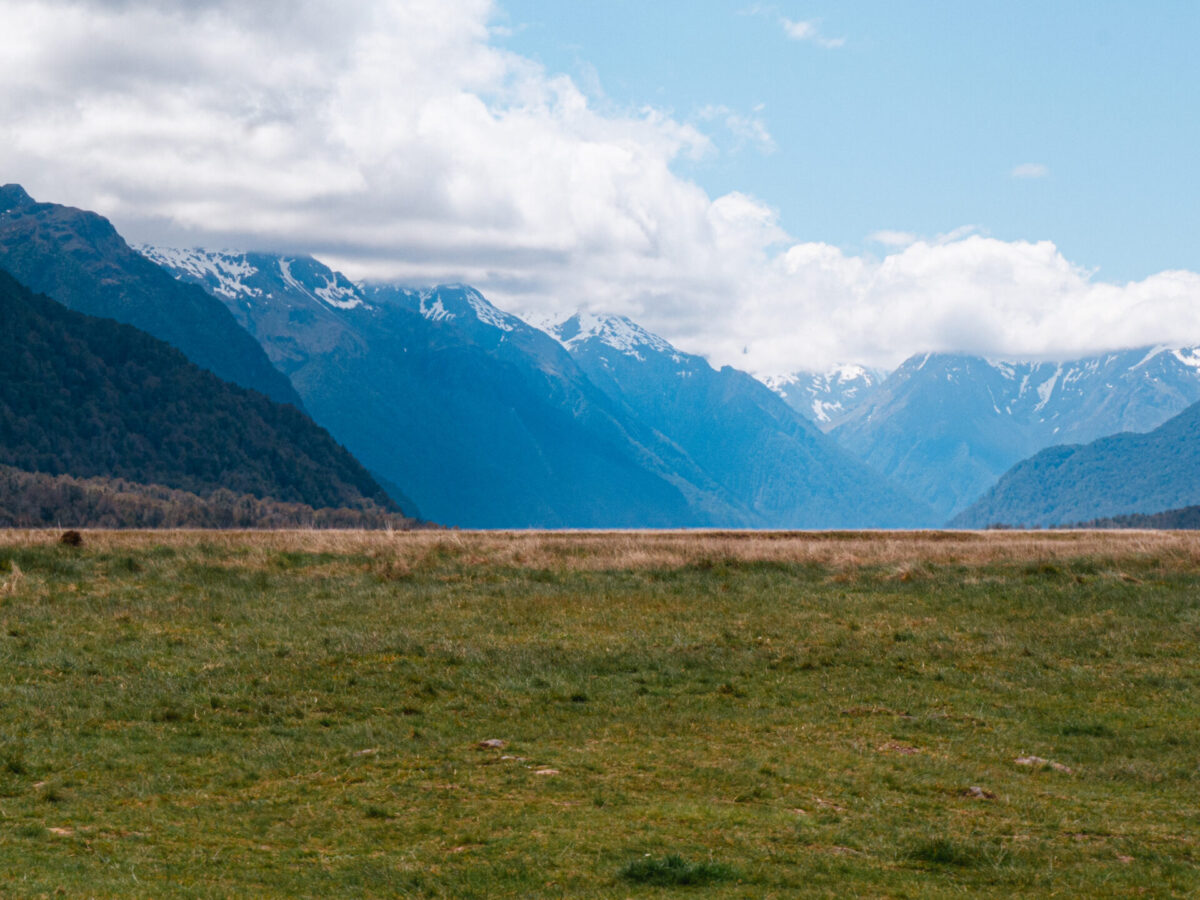
There are at least a dozen little stop offs on the Milford Road, some that offer impressive views or short nature walks; others may be longer half day or full day hikes. Below are a list of my personal favorites.
1. Lake Mistletoe
Alright, Lake Mistletoe wasn’t that interesting but it does offer an hour-long nature walk around the lake. I didn’t do the full walk, BUT I did spot my first Tui (a colorful native NZ bird with a unique call) after hearing their glorious songs in the trees so that was pretty special.
2. Eglinton Valley
Eglinton Valley is plain gorgeous. Don’t miss this stop.
3. Knobs Flat
Not really a favorite stop, but has flush toilets, vending machines, some info boards, and an emergency phone.
4. The Divide
The Divide is where you want to be for the first stop in the park with great hiking options. Firstly, for a day hike, you can do the Key Summit Hike (3 hours) which follows part of the Routeburn Track (another Great Walk) and brings you up to an awesome view of the park.
5. Pop’s View/Hollyford Valley Lookout

Don’t miss this stop! This in my opinion offers the first really impressive views into Fiordland. It’s just amazing. Also, this is where we saw our very first kea! This little alpine parrot was hopping all around the parking lot and seemingly posing for pictures. They are such curious birds and very funny to watch.
6. Lower Hollyford Road
Shortly after passing the Divide and Pop’s View, there will be an option to turn right instead of continuing straight towards Milford Sound. The Lower Hollyford Road is sparsely populated, so is a nice break from the other touristy areas of the Milford Road.
For shorter walks with nice rewards of waterfalls, you can walk to Humboldt Falls (30 minutes) or the first part of the Lake Marian Track, which brings you up a boardwalk to some waterfalls at the start of the hike (20 minutes).
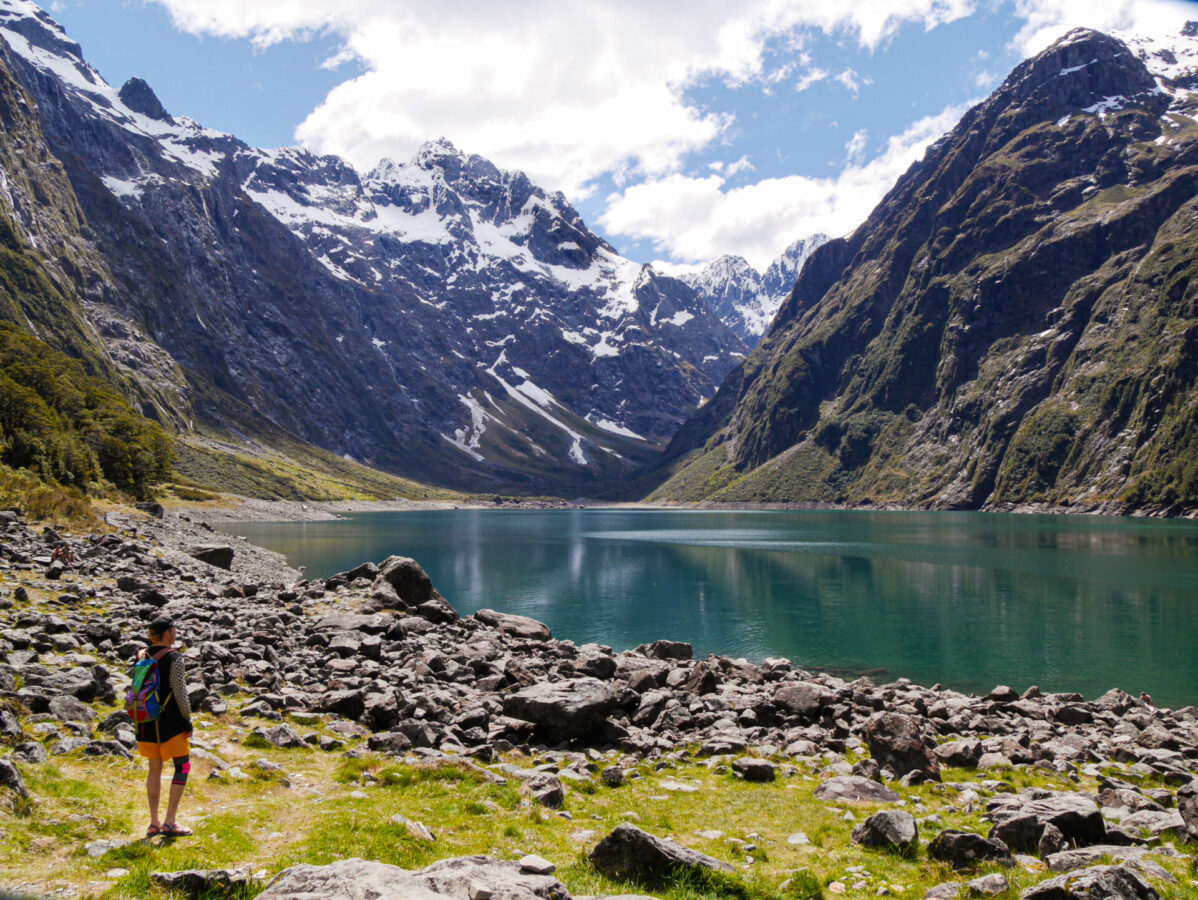
For a longer hike, I highly recommend doing the entire Lake Marian Track. It’s about 3 hours out and back, and is mostly intermediate uphill until you turn around to go down. The trail follows some waterfalls and a river up through the forest, until you reach a “hanging valley” with an absolutely gorgeous alpine lake – Lake Marian. You will be surrounded by tall mountain cliffs and the peace and quiet that comes with going a little off the beaten tourist track. If it’s sunny enough, you could even have a dip in the lake. (Niko dove right in, but I refrained as it was a little too overcast and windy for me.) This was one of the highlights of our Fiordland trip.
After exploring Lower Hollyford Road, come back the way you came and take a left back onto Milford Road (not towards Milford Sound unless you’re planning to camp at the lodge there). Go back to a campsite and relax for the evening, or do any other nature walks that you missed earlier.
Day 3: Milford Sound
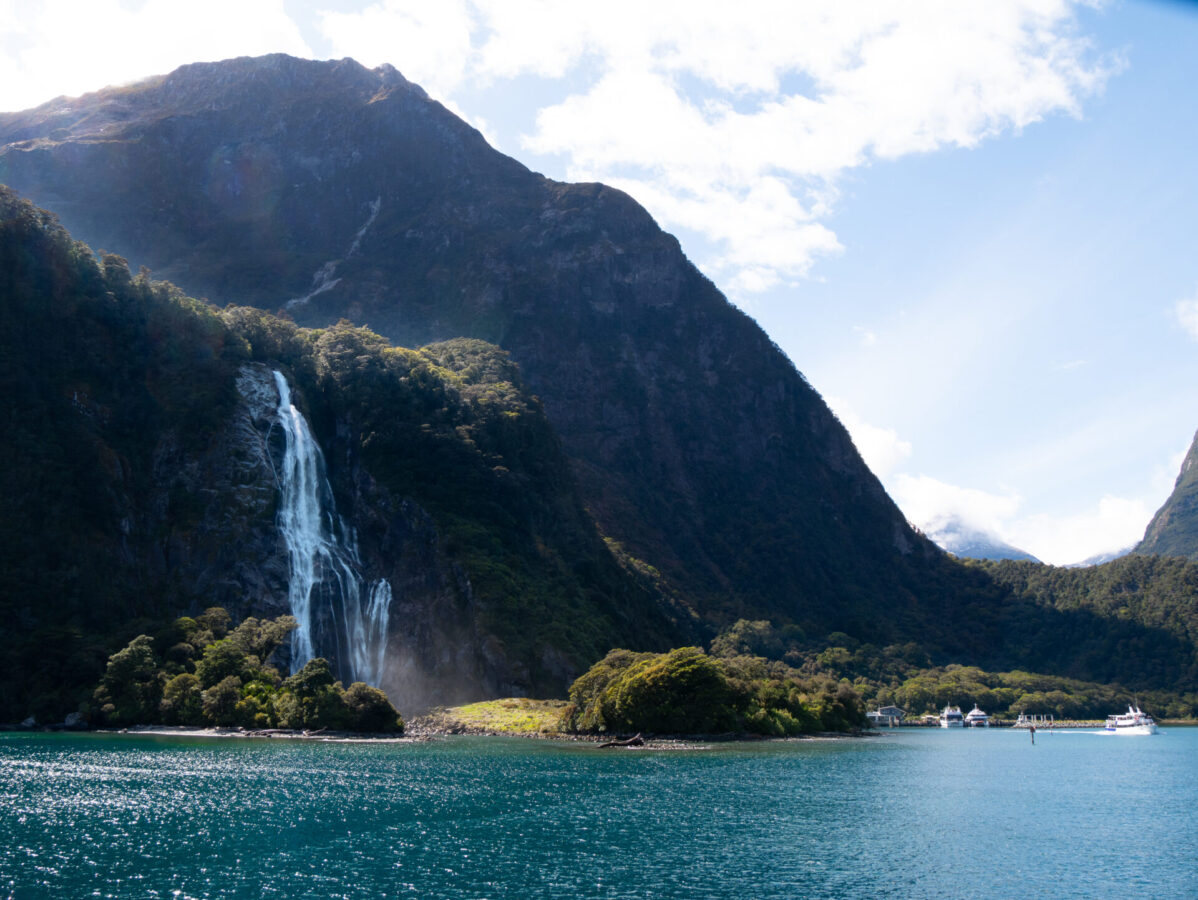
In the morning, continue the drive towards Milford Sound. There are a few more stops before you reach the end of the road where the fiord begins. You can choose to do these on your way there, or on your way back, depending on when your Milford Sound cruise is. (If you have one, which you should! More on this below.)
More Great Places to Stop on the Way to Milford Sound
7. Monkey Creek
Monkey Creek is known for spotting wildlife such as keas or the rare blue ducks.
8. Homer Tunnel
Next you’ll probably wait at a stop light for several minutes and then pass through the Homer Tunnel, which is a 1.2 km long one-way tunnel built through the Darran Mountains. This tunnel, opened in the 1950s, is the only reason we have road access to Milford Sound. It’s a pretty cool architectural feat.
9. The Chasm
Currently the Department of Conservation (DOC) says it’s closed, but you can still walk the begining section of the trail and see some of the waterfall and part of the “chasm” that gives this walk its name.
At Last: Milford Sound
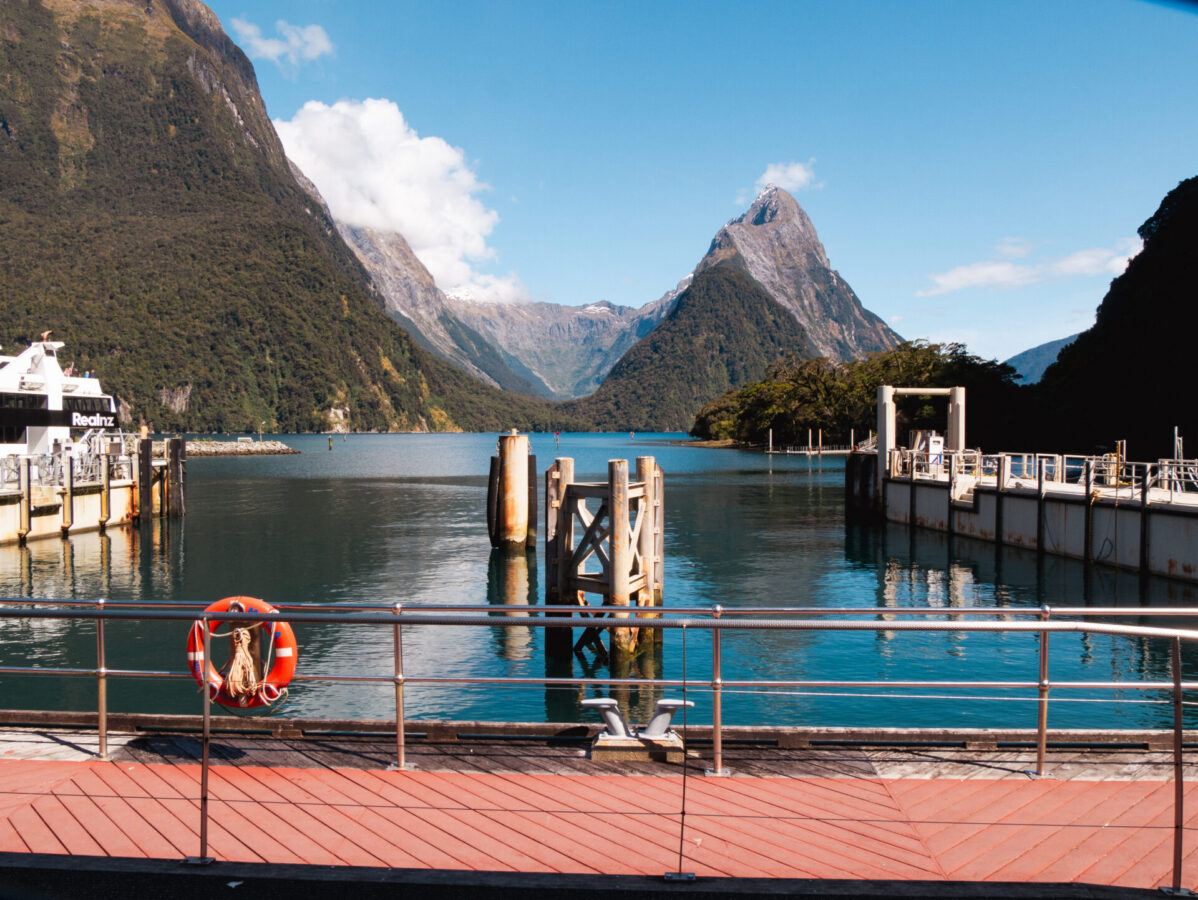
Sometimes, touristy places are just annoying. But often there is a good reason that a place is popular. Often called the “8th Wonder of the World,” Milford Sound is one of those places that will show you why it’s so famous. It’s a fiord that was carved by glaciers millions of years ago, but today it’s a magical wonderland.
The main attraction here is getting on a cruise boat and going deeper into the fiord. Most cruises last about two hours, taking guests all the way through the glacier-carved fiord with sheer mountain cliffs and waterfalls all around until you reach the Tasman Sea. Then they loop back around the other side of the fiord.
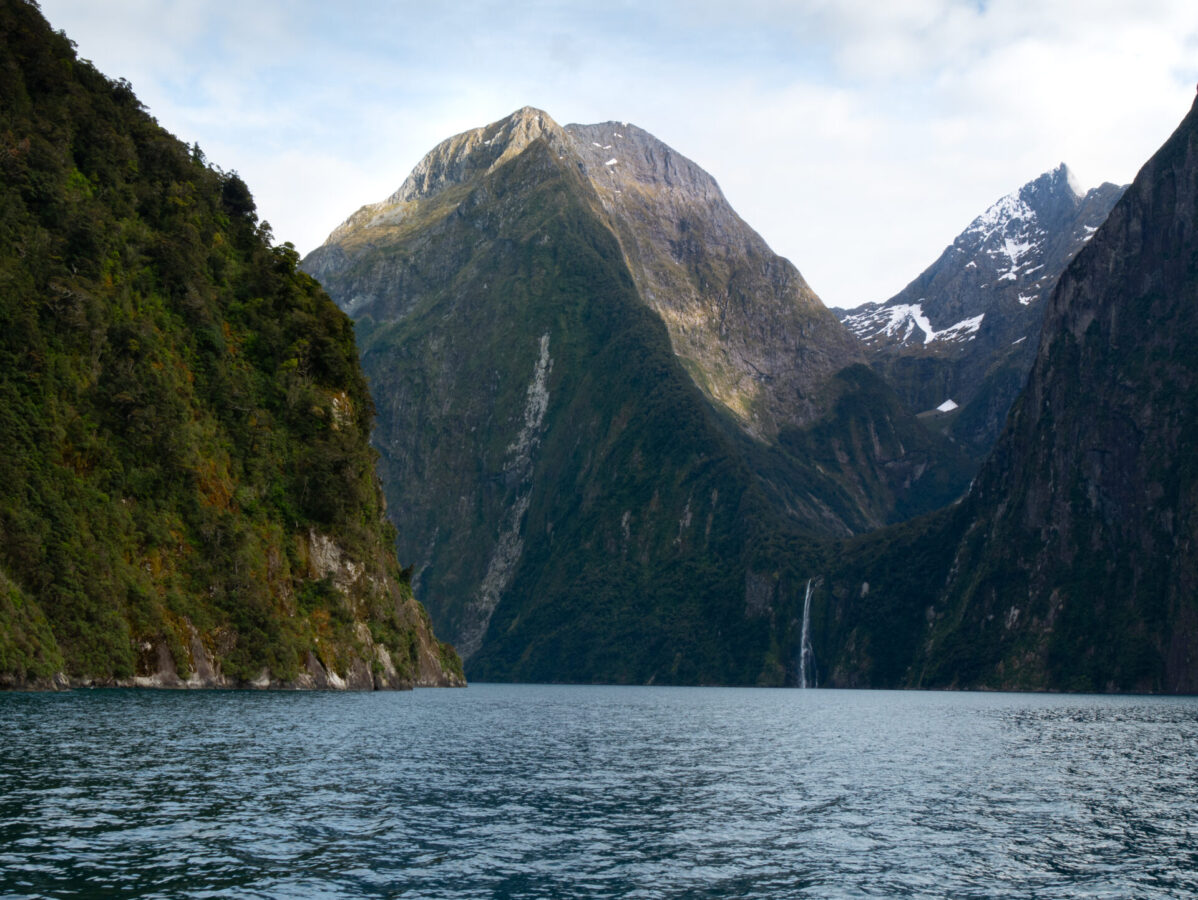
No matter the weather, you will have fabulous views of this very special place. If it’s raining you’ll see dozens or even hundreds of waterfalls coming down the cliffs. If it’s sunny, you’ll still see waterfalls (though less so) and incedible peaks all around. If you’re lucky you’ll spot some wildlife, such as fur seals, yellow-eyed penguins, or dolphins. We saw all three of these on our cruise. Even more rare, sometimes whales can be seen in the fiord as well. This is a must-do experience in New Zealand and was the highlight of our trip to Fiordland National Park.
There are many cruise companies to book with, most which cost around $150 per person for a two hour cruise. However, I nabbed our cruise tickets for $79 each with Bookme. (This website is a great resource as it offers deals all around New Zealand.) We went with Mitre Peak Cruises, which was a much smaller boat in comparison to the others in the harbor and allowed us to get a little bit closer to the waterfalls and the edge of the fiord where the water meets the rock walls. Any cruise you book with will offer commentary on the area and point out any visible wildlife; I found our commentator to be super knowledgeable and I learned a lot during the two hour boat trip.
In addition to the cruise, there are a few short nature walks in the harbor (such as the Lookout Track and the Milford Foreshore Walk) and it is possible to go kayaking with a guide to explore the fiord with more intimacy.
Options for 4 or More Days in Fiordland National Park:
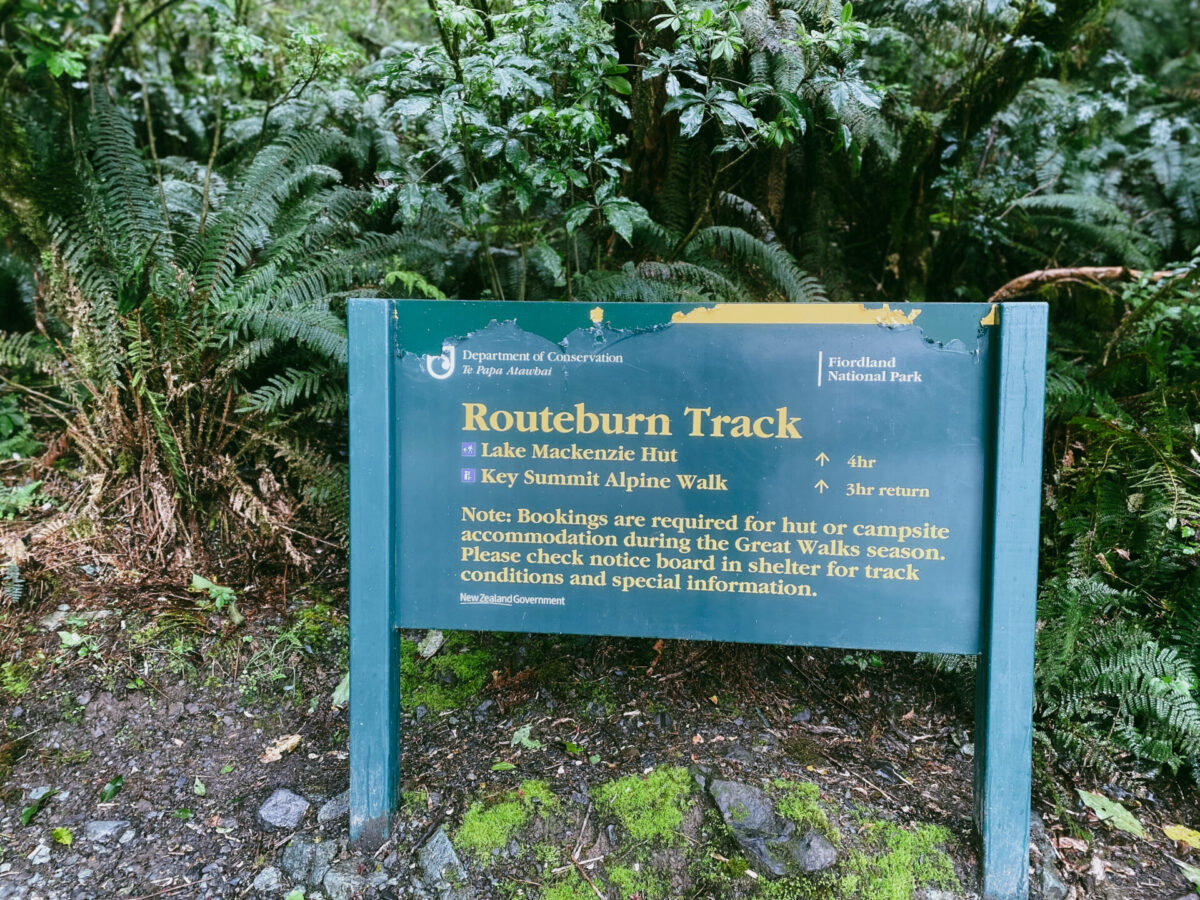
From Te Anau:
1. Kepler Track
You can do part of this Great Walk as a day hike, or the entire track over a 3 or 4 day period whilst camping or staying in huts along the trail. The trail offers stunning views of Lakes Te Anau and Manapouri, as well as the mountains all around in Fiordland National Park. Campsites and huts need to be booked in advance, and this is a loop track so no transport is needed as the trail brings you back around to Te Anau. I absolutely loved this hike and wrote up a separate post all about it here.
2. Milford Track
Another Great Walk, this track starts on Lake Te Anau, offers incredible scenery in Fiordland National Park and actually brings you right into Milford Sound – where you can then take a cruise to go deeper into the fiord! There are 3 huts along this trail, which need to be booked well in advance. (This year, when they opened the Great Walk bookings in July for the 23-24 summer season, it booked out in 4 hours!!)
This track is extremely popular and quite expensive, as it requires a boat trip to start the trail, bookings for the huts (which cost more than other Great Walks), and return transport from the end point back to Te Anau or Queenstown. I’ve heard it could cost around $600 NZD including the huts and all of the required transport. However, this track is world-famous for a reason and could be a great way to splurge while in New Zealand. Another option would be to do day hikes from either end of the track entrance points.
3. Doubtful Sound Cruise
Take a 7-hour journey into Fiordland National Park. Doubtful Sound, like Milford Sound, is a glacier-carved fiord – but this one isn’t accessible by road. To get there, you have to take a boat across Lake Manapouri, then a coach bus into the Fiordland rainforest before you reach Doubtful Sound. At this point you take a cruise into the fiord. Because of its remoteness, this trip can only be booked through a tour agency and costs around $400 for the entire day trip. You can bring your own food or pre-purchase lunches through the tour company. While it’s pricey, this trip is certainly epic and well worth the money. It’s an added bonus that there are generally less tourists in this part of the park.
From the Divide:
4. Routeburn Track
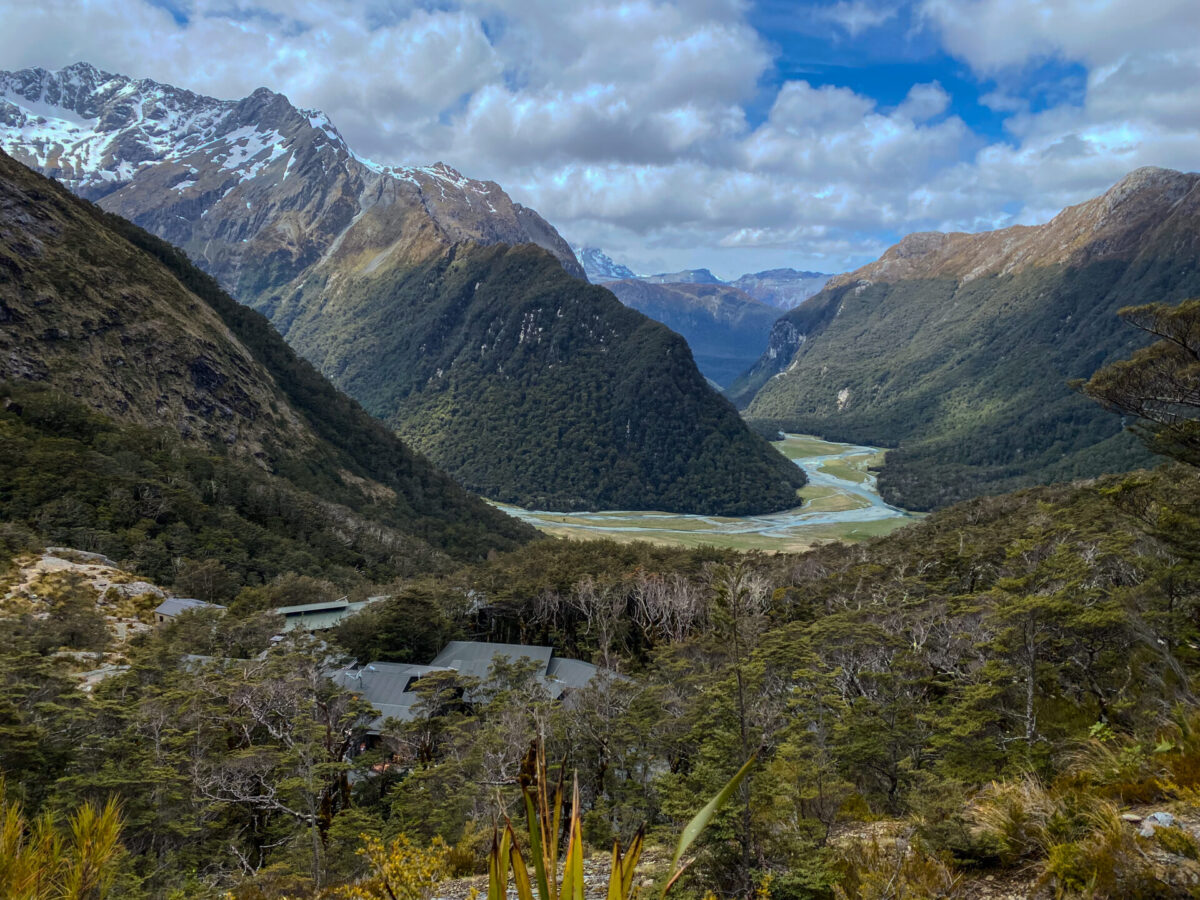
While the Key Summit Track also starts here, instead of (or in addition to) doing the summit, you continue hiking this Great Walk across the mountain range, where the Routeburn Track brings you along the other side to the Routeburn Shelter, near Glenorchy, a 4-hour drive away. It’s not a very easy trip back as you need to get return transportation (or to book your campsites both ways and hike back the same way you came). Alternatively, you can start at the Routeburn Shelter on the Glenorchy side and finish your hike at the Divide.
Logistically this one is awkward to combine with the rest of your Fiordland trip. HOWEVER I hiked this track over two days (starting at the Routeburn Shelter) and it was absolutely stunning, with dozens of waterfalls along the trail and some amazing views of the mountains and valleys around it. This track is one of the most popular Great Walks in New Zealand, and I highly recommend doing it if you have the chance. Check out my separate post about the Routeburn Track here!
5. Greenstone & Caples Tracks
Another option here is the Greenstone and Caples Tracks, which you could hike part of as a day trip or turn into a 4-day loop track.
From Lower Hollyford Road:
6. Hollyford Track
For an optional trip extension, you can also do the Hollyford Track, which is a 4-8 day trip that starts at the end of Lower Hollyford Road. This track takes about 4 days one way (or 8 days out and back), or alternatively you can connect this hike with the Pyke-Big Bay Route for a more challenging 10 day total loop trip.
From Along Milford Road:
While I’ve already listed some challenging multi-day hiking options in Fiordland, there are more advanced day hikes available along the Milford Road as well. These hikes are not always well marked, or they require advanced navigational abilities or possibly river crossings. For that reason, these hikes should only be attempted in good weather by experienced hikers and those who have the appropriate knowledge and gear to navigate in the backcountry. Since both of these are full day hikes, either could be done in lieu of some activities mentioned above or as an extra day on your trip.
7. Gertrude Saddle Route
While this hike can be done in 4-6 hours and offers great views, it’s a very challenging hike with steep sections (some of which have cables to assist with climbing) and river crossings. The route isn’t always well-marked and should only be attempted in good weather.
8. Tutoku Valley Route
This challenging hike takes about 5 hours to complete, taking you through beech forest and valleys, bringing you to views of some of Milford’s highest mountains.
Places to Stay Along the Way
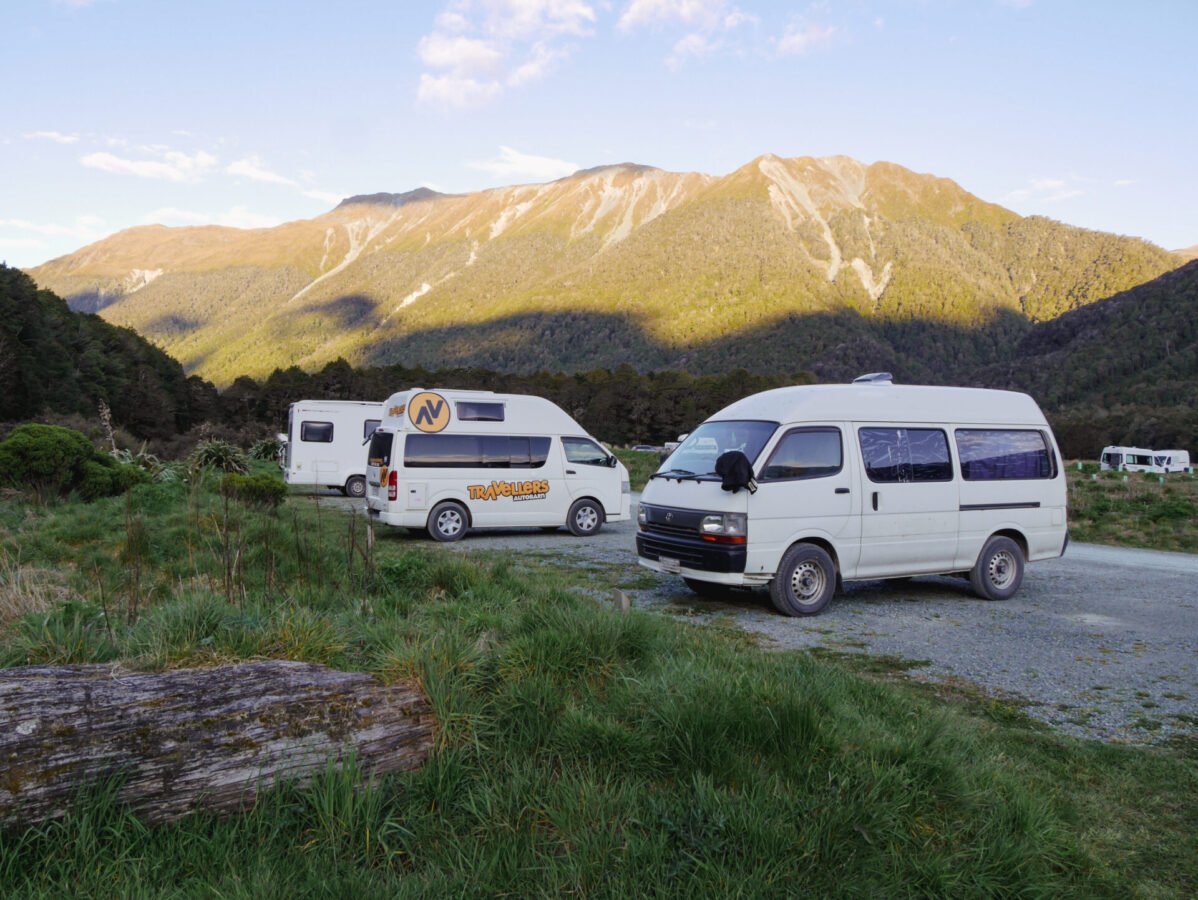
The road to Milford has seven DOC campgrounds, all of which cost $15 per person per night. Most of the campgrounds on Milford Road are around the midway point between Te Anau and Milford Sound. The closest site to Te Anau is Henry Creek (about 30 minutes) and the closest to Milford Sound is Cascade Creek (about an hour). The rest lie in the middle of the these two campgrounds.
Aside from DOC campgrounds, there are only two other places to stay along Milford Road. The first is Eglinton Valley Camp. This campground is near most of the other DOC sites along Milford Road, and offers more amenities at a higher rate. The other is the Milford Sound Lodge. They offer cabins as well as spots for campervans, but as it’s just a few minutes from Milford Sound, it’s a bit more expensive and tends to book out early.
There are also many hotels, lodges and hostels in Te Anau, as well as a few campgrounds if you choose to stay there before or after your Fiordland National Park trip.
Tips for a Safe, Awesome Trip
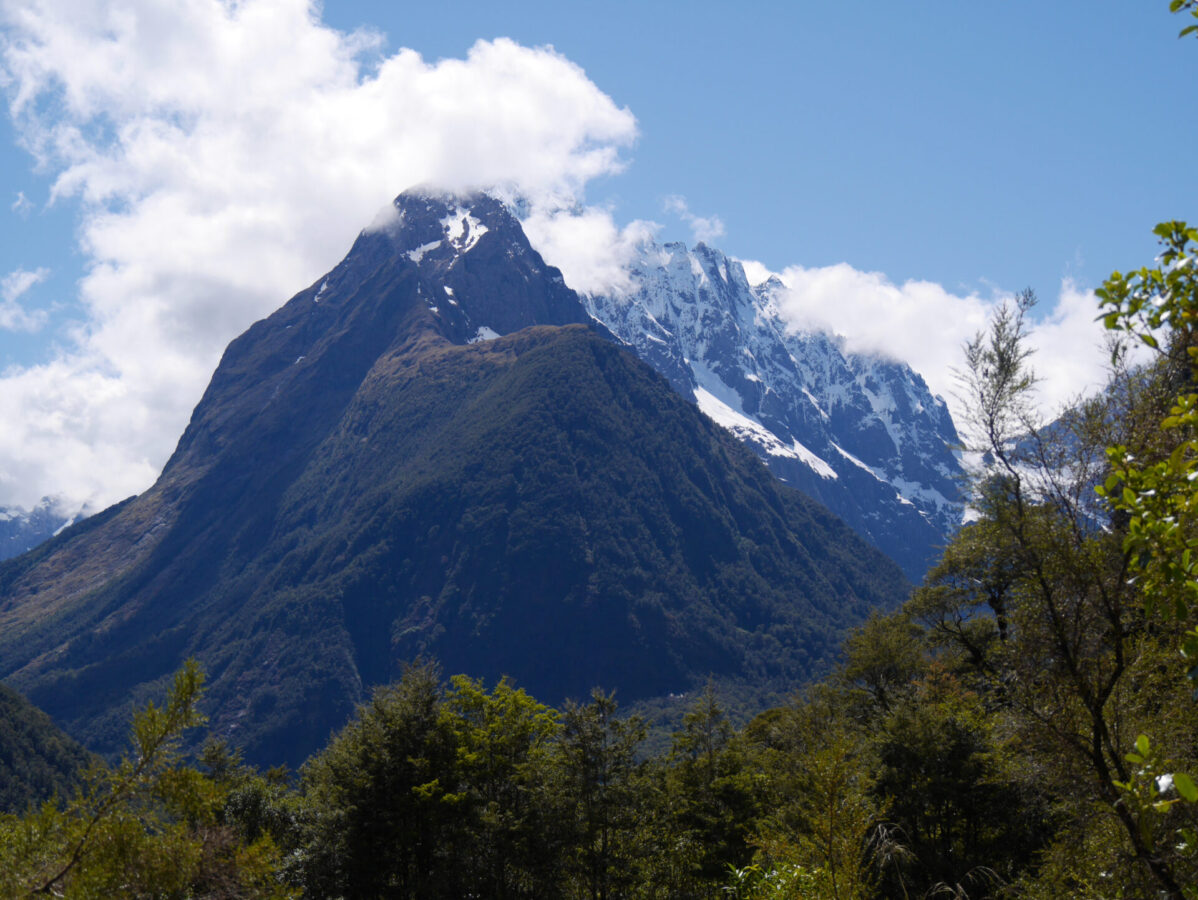
Fiordland National Park can have variable weather, including rain, snow, and even avalanches. It’s very remote and therefore it’s vital to come prepared so that you can have a safe trip.
1. Stock Up
Te Anau is the last town before entering Fiordland National Park. This means that it’s your last chance to fill up your gas tank and stock up on your food and any camping or hiking gear you’ll need for the time you’ll be in the park.
2. Check the Fiordland National Park Visitor Centre
The Visitor Centre is located in Te Anau and offers weather reports, safety alerts, and any road closures going on in the park. Here you can also get maps and camping needs such as sunscreen, bug spray, and some weatherproof clothing. There is no cell service in the park so any information you might need you can get at the Visitor Centre.
3. Pack Accordingly
On average it rains 200 days a year in Fiordland National Park. This makes for a place plentiful with waterfalls, but also means you need to have waterproof clothing to enjoy your time there. It can also snow into the summer season and during winter avalanches are common. Hiking to high elevations in the park can bring sudden changes in weather. Be prepared and bring layers. Check before you leave Te Anau and make sure to purchase anything you might need. Make sure to pack bug spray (for pesky sandflies) and sunscreen, as well as waterproof clothing and warm layers.
4. Rent a Campervan
(Or buy one, depending on how long you’ll be in NZ!)
Having access to wheels means you can stay in the park as long as you want, and this also doubles as your place to sleep. Traveling by RV or converted campervan (also known as “freedom camping”) is very popular in New Zealand. There are plenty of places to rent them all around the country, but Queenstown is probably the closest.
I personally have used vans from Camplify, which is like AirBnB but for campervans and it’s way cheaper than renting from any of the NZ rental companies. (Renting a Camplify van from Queenstown will likely still be more expensive than getting one from another city or area in New Zealand. If you are planning a trip around New Zealand, I recommend getting your van from another city.)
Tips for Self-Contained Camping in NZ
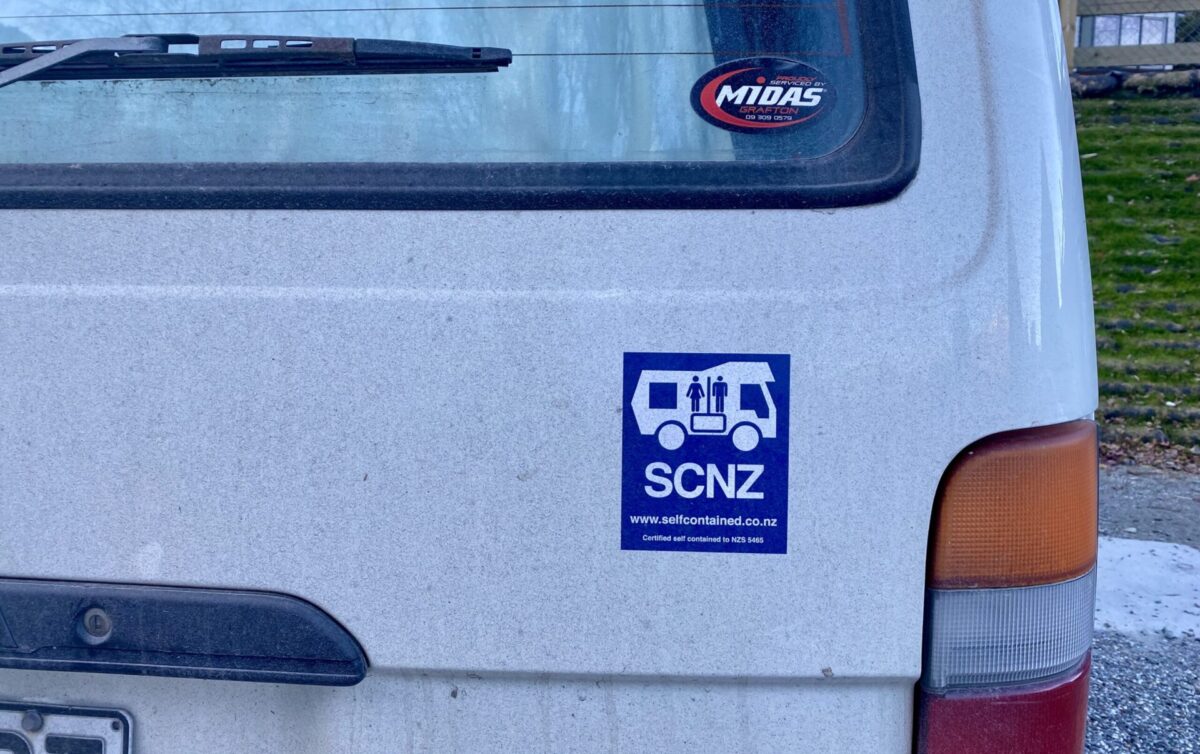
As I mentioned above, freedom camping your way around New Zealand is extremely popular. Freedom campers are everywhere, and people selling vans, converting vans, or renting vans is a huge business here. Since there isn’t terribly great public transportation in New Zealand, having your own van just makes sense. It’s more economical and gives you all the freedom you need to plan your own trip and not be on anyone’s schedule.
However, over the last decade or two as freedom camping has exploded in New Zealand, there have also been plenty of people who came here and abused their freedom camping privilege by leaving trash and human waste in public areas, lighting fires where they shouldn’t, and just generally disrespecting the land and the people of New Zealand. Sadly, this has given us freedom campers a bad reputation and New Zealand has subsequently passed many laws that were made to stop this behavior.
One of those laws is requiring that campervans be “self-contained” in New Zealand – basically that your van has onboard trash, running water, and a toilet for occupants to use. Since all of the campgrounds in the park have toilets, it’s not technically required to be self-contained there.
However, there may be other free campsites or DOC campsites on your trip that require the certification. Please always use your onboard toilet or the toilets provided by DOC. There are pit toilets at every campground and many toilets are scattered throughout the trails at Fiordland as well. Please don’t start a fire unless there is explicit permission and take your trash out with you. New Zealand cares a lot about preserving the natural beauty here, and since we have the privilege of experiencing that natural beauty, we all should take part in preserving it as well. My other post about freedom camping goes into more detail about self-contained camping best practices, so be sure to check that out as well.
Enjoy your trip in Fiordland National Park!
I hope you have an AMAZING trip in Fiordland National Park. For more New Zealand trip ideas, check out this post. If you liked my tips, you can share this article or comment below to let me know how your trip went! Thanks for reading! 🙂
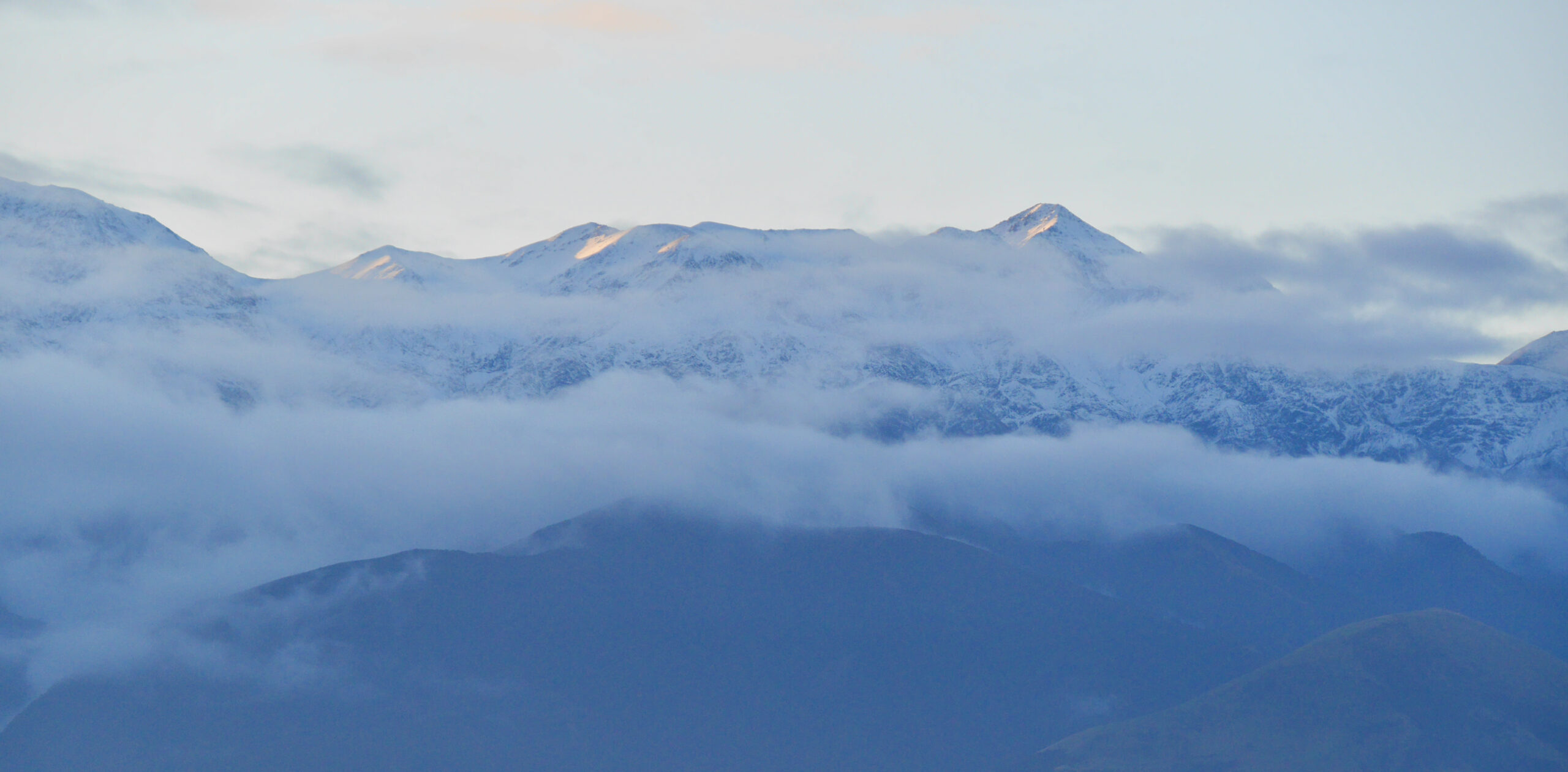

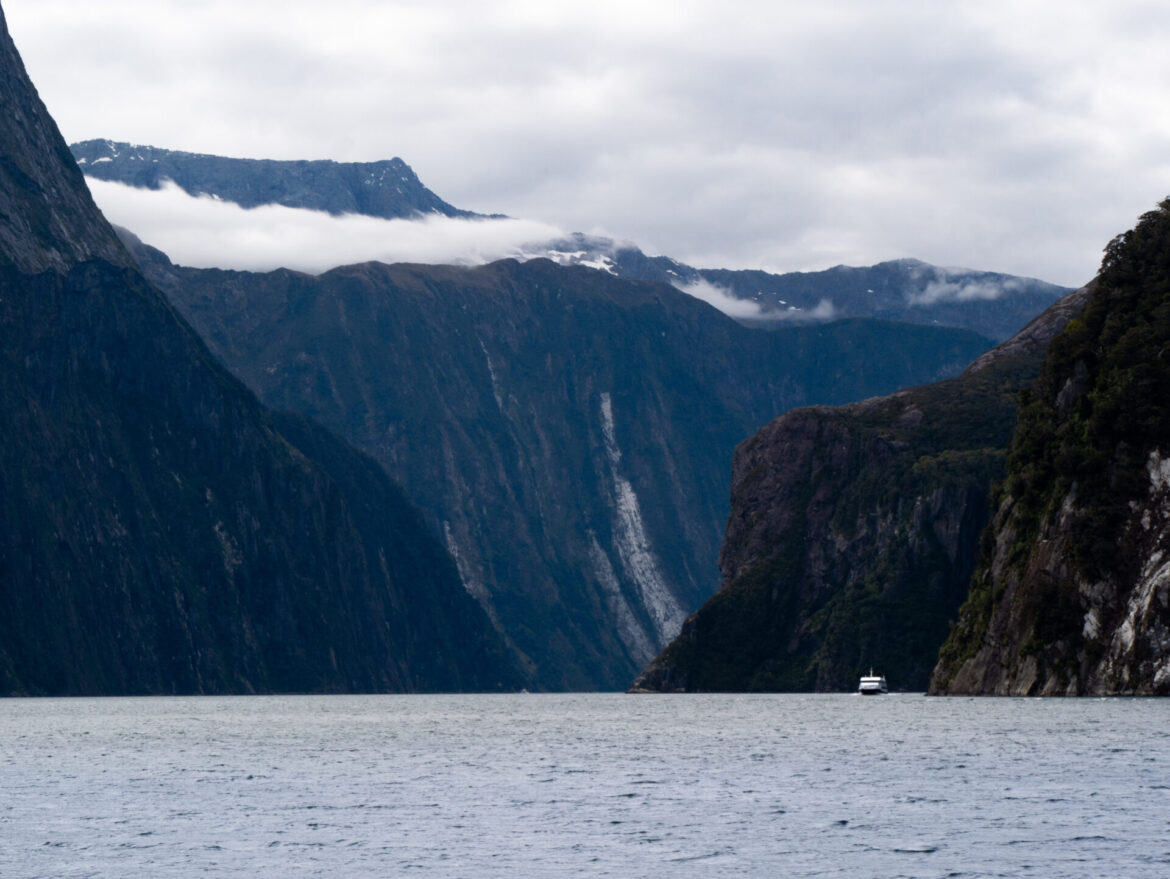
Leave a Reply